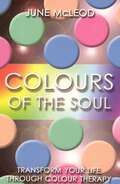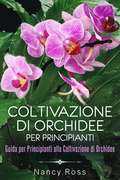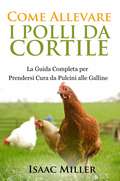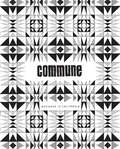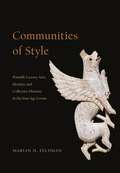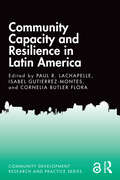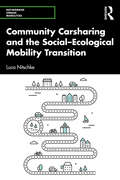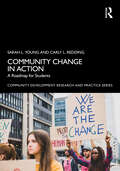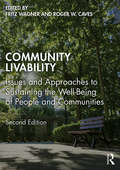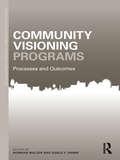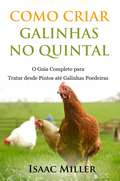- Table View
- List View
Colour in the Garden: Stylish ideas for year-round colour
by Lucy Bellamy'Bellamy makes gardening seem simple, expressive and joyful. Anyone can do it.' Evening Standard*** 'I am hungry for colour. I want jam red and acid yellow, violet blue and caterpillar green. I want cinnamon orange with scorched yellow, liquorice and blackcurrant. I want amethyst, putty and smoky blue, the liminal in-between colours, and sharp lemon with tart pink and purple that is rich and electric. We all know instinctively that colour is good for us and it is colour that draws me out into my garden.' Lucy BellamyWhen you add colour to a garden it instantly creates atmosphere. While most of us know which colours we like, and maybe even which colours we want in our garden, knowing which plants will achieve this can be more difficult. Gardening writer Lucy Bellamy and photographer Jason Ingram offer a deep dive into a modern approach to colour, exploring how to choose plants and use them creatively and inventively. With inspirational planting schemes and plant lists, advice on colour in containers, tiny back gardens and compact front gardens, this book will change the way you approach your outdoor space.
Colour in the Garden: Stylish ideas for year-round colour
by Lucy Bellamy'Bellamy makes gardening seem simple, expressive and joyful. Anyone can do it.' Evening Standard*** 'I am hungry for colour. I want jam red and acid yellow, violet blue and caterpillar green. I want cinnamon orange with scorched yellow, liquorice and blackcurrant. I want amethyst, putty and smoky blue, the liminal in-between colours, and sharp lemon with tart pink and purple that is rich and electric. We all know instinctively that colour is good for us and it is colour that draws me out into my garden.' Lucy BellamyWhen you add colour to a garden it instantly creates atmosphere. While most of us know which colours we like, and maybe even which colours we want in our garden, knowing which plants will achieve this can be more difficult. Gardening writer Lucy Bellamy and photographer Jason Ingram offer a deep dive into a modern approach to colour, exploring how to choose plants and use them creatively and inventively. With inspirational planting schemes and plant lists, advice on colour in containers, tiny back gardens and compact front gardens, this book will change the way you approach your outdoor space.
Colours of the Soul: Transform Your Life Through Colour Therapy
by June McLeodColors are all around us, but also within us. We not only have our favorite colous, our auras have their own color. Our chakras have their different colors. Tuning in to our colors rebalances our selves with nature and each other. Finding our right color has implications for the way we dress, how we decorate our homes, even the food we eat. Use the color inset and the exercises in this book to find the right colors for you in different situations. Become color intelligent, and live a glorious life of kaleidoscopic color rather than a monochrome existence.
Coltivare La Cannabis Da Zero: Una guida pratica per coltivare piante di cannabis in casa o in giardino
by Jack BakerDal fumo al burro alla cannabis, questo manuale facile da seguire ti trasformerà in un perito della coltivazione e del consumo di marijuana. Coltivare marijuana per principianti Stai cercando una guida passo passo per coltivare marijuana in casa o in giardino? Questo libro ti fornirà una conoscenza completa sulla coltivazione della marijuana e ti insegnerà consigli e trucchi per un orto più verde Ti piacerebbe iniziare a coltivare la Marijuana? La coltivazione della cannabis non è mai stata così facile e ottimi risultati sia in casa che in giardino sono alla tua portata. In questa guida per principianti troverai le conoscenze di base sulla cannabis, semi e tutto ciò che è rilevante per avere successo in questo campo di attività. Tieni presente che la cannabis non è legale in tutti gli stati, quindi un capitolo ti guiderà sulle migliori soluzioni a seconda dello stato in cui vivi. (Negli U.S.A. N.d.T.) Scoprirai che questo tipo di coltivazione non richiede molte cure. Hai solo bisogno di preparare bene il tuo ambiente di coltura, avere gli strumenti giusti e mettere un po' di amore nelle piante. Le foglie sono delicate, ma ti ripagheranno alla grande in sapori e aromi. In questo libro imparerai: Le differenze tra le varietà di marijuana Il potere curativo e terapeutico dell'erba di qualità Per impostare una coltivazione di marijuana di successo, in casa o fuori Quali sono gli usi sicuri della marijuana e la legge e la regolamentazione delle piante di marijuana Come utilizzare l'idroponica e il sistema di acquaponica per coltivare marijuana E MOLTO DI PIÙ! Dal fumo al burro alla cannabis, questo manuale facile da seguire ti trasformerà in un perito della coltivazione e del consumo di marijuana. Fai clic su Acquista ora e ricevi la tua copia oggi!
Coltivare un orto: Guida completa per principianti
by Nancy Ross Ilaria GhezziVUOI IMPARARE COME COLTIVARE UN MERAVIGLIOSO ORTO CASALINGO? Questa guida ti sarà utile sia che tu voglia scoprire quali sono gli ortaggi migliori da coltivare, sia che tu voglia imparare come coservare i tuoi prodotti a lungo termine!!! Ecco un'anteprima dei contenuti che potrai leggere... TROVARE GLI ATTREZZI GIUSTI ORTO CASALINGO ORTO CONDIVISO I PRIMI PASSI PER INIZIARE IL TUO ORTO GLI ORTAGGI MIGLIORI DA COLTIVARE CONSERVARE GLI ORTAGGI FRESCHI TUTTO L'ANNO I BENEFICI DI COLTIVARE UN ORTO E TANTO ALTRO ANCORA!! Ecco un'anteprima degli ortaggi che imparerai a coltivare: GRANOTURCO FAGIOLINI POMODORI PISELLI PEPERONI E TANTI ALTRI!
Coltivazione di Orchidee per Principianti: Guida per Principianti alla Coltivazione di Orchidee
by Nancy Ross Roberto SpigarelliVuoi Imparare Come Funziona La Coltivazione Delle Orchidee Per I Principianti? Ecco un'anteprima di cosa imparerai... Perché Dovrei Coltivare le Orchidee? Di Cosa Hanno Bisogno Le Orchidee Requisiti Importanti Per La Coltivazione Delle Orchidee Il Rinvaso Delle Orchidee La Propagazione per Coltivare più Orchidee Molto, molto altro ancora!
Come Allevare i Polli da Cortile: La Guida Completa per Prendersi Cura da Pulcini alle Galline
by Ana-Maria Hertel Isaac MillerAllevare i polli da cortile è più facile che pensi, e molto più facile che gli animali domestici di compagnia regolari. Solo controllando i tuoi polli per qualche minuto ogni giorno, puoi raccogliere uova fresche qutidianamente in poco tempo. In questo libro faremo una rassegna dei passi necessari, da comprare e prendersi cura dai piccoli pulcini, al transferimento dei polli da cortile in un pollaio di fuori, e cosa dovremo aspetarcinel fra tempo. Afferi una bibita e uno spuntino, trovi un luogo piacevole per sedere ed insieme scopriremo che cosa possono essere i polli da cortile. In questo libro leggeremo: Spazio Necessario e la Dimensione del Pollaio Scegliere una Razza di Polli Come Prendersi Cura di Polli Quando Portarli al Pollaio Mantenere il Pollaio e la Recinzione Pulite Come Alimentare i Polli Abbia una vita gioiosa con questo libro ed i tuoi piccoli nuovi amici.
Comment Désencombrer Votre Maison et Votre Esprit: l'art du rangement et du nettoyage
by Mary AlbrichMary Albrich décrit sa méthode efficace pour nettoyer et désencombrer votre maison et votre esprit. Avez-vous l'impression que, peu importe le nombre de fois que vous essayez, vous êtes incapable de nettoyer et d'éliminer le désordre de votre maison et de vos espaces personnels? Mary met le nettoyage et l'organisation à un tout autre niveau avec son livre. Ce guide détaillé est une méthode rapide, simple et efficace pour nettoyer votre maison ou vos espaces personnels. Ces étapes vous permettront d'éliminer cet encombrement sans fin de votre vie, de vider votre esprit et de devenir plus efficace tout en vous sentant moins stressé et plus heureux!
Comment élever des Poules de Basse-Cour
by Isaac MillerL’élevage de poules de basse-cour est bien plus facile que vous ne le pensez, et elles sont plus dociles que d’autres animaux domestiques. Il vous suffit de contrôler chaque jour que vos poules vont bien, le temps de quelques minutes, et vous devriez pouvoir ramasser des œufs frais très rapidement. Dans ce livre, nous nous pencherons sur les étapes nécessaires, depuis le moment où vous vous procurez des poussins et où vous vous en occupez, jusqu’au moment où vous déplacez vos poules de basse-cour dans un poulailler extérieur, sans oublier toutes les étapes intermédiaires. Servez-vous un verre, prenez un morceau à manger, trouvez un endroit confortable pour vous asseoir et nous découvrirons ensemble les joies de l’élevage des poules de basse-cour. Dans ce livre nous évoquerons les étapes suivantes : L’espace requis et la taille du poulailler Le choix de la race des poules Prendre soin des poussins Le moment opportun pour les déplacer dans le poulailler L’entretien et le nettoyage du poulailler L’alimentation des poules Amusez-vous avec vos nouvelles amies grâce à ce livre.
Common Threads
by Sharon KallisDisposing of unwanted natural materials can be expensive and time-consuming, or it can present a tremendous opportunity for creating collaborative eco-art. Invasive-species control, green-waste management, urban gardening, and traditional crafts can all be brought together to strengthen community relationships and foster responsible land stewardship. Simple, easily taught, creative techniques applied with shared purpose become the modern-day equivalent of a barn raising or a quilting bee.Common Threads is a unique guide to engaging community members in communal handwork for the greater good. Sharon Kallis provides a wealth of ideas for: Working with unwanted natural materials, with an emphasis on green waste and invasive species Visualizing projects that celebrate the human element while crafting works of art or environmental remediation Creating opportunities for individuals to connect with nature in a unique, meditative, yet community-oriented wayCombining detailed, step-by-step instructions with tips for successful process and an overview of completed projects, Common Threads is a different kind of weaving book. This inspirational guide is designed to help artists and activists foster community, build empowerment, and develop a do-it-together attitude while planning and implementing works of collaborative eco-art.Sharon Kallis is a Vancouver artist who specializes in working with unwanted natural materials. Involving community in connecting traditional hand techniques with invasive species and garden waste, she creates site-specific installations that become ecological interventions. Her recent projects include The Urban Weaver Project, Aberthau: flax=food+fibre, and working closely with fiber artists, park ecologists, First Nations basket weavers, and others.
Commune: Designed in California
by Roman Alonso Steven JohanknechtA Town and Country magazine design pick, a monograph of the work of a California lifestyle and interior design firm, from the company&’s founders. Commune was established in Los Angeles in 2004 by four like-minded souls—Roman Alonso, Steven Johanknecht, Pamela Shamshiri, and Ramin Shamshiri—with a common mission: to enhance life through design and to blur the lines between disciplines, eras, and styles. California is for those who refuse to conform and who live for freedom of expression, indoor/outdoor living, and that golden sunshine glinting off the waves of the Pacific. Commune perfectly captures this spirit and embodies a new California style that freely mixes old and new in its layered, highly personal interiors that embrace color, pattern, and texture. This book is the first monograph of Commune&’s work, featuring its designs for private residences, hotels, commercial spaces, and restaurants, as well as the works they specially commission from virtually everyone in the artisan craftsman movement in California today. &“Heavyweight Champs—Our picks from this year&’s tempting crop of design books. Commune highlights work by the Los Angeles design group, known for its bohemian-chic approach to houses, hotels (such as LA&’s Ace), and home products.&” ―Town & Country Magazine
Communicating Family and Consumer Sciences: A Guidebook for Professionals
by Elizabeth J. Hitch June Pierce YouattCollege textbook designed for professionals who will be communicating with students or clients in both formal classroom and less formal settings . For use by students and professionals in community and human services.
Communicative Cities and Urban Space (China Perspectives)
by Scott McQuireCities have long been recognized as key sites for fostering new communication practices. However, as contemporary cities experience major changes, how do diverse inhabitants encounter each other? How do cities remember? What is the role of the built environment in fostering sites for public communication in a digital era? Communicative Cities and Urban Space offers a critical analysis of contemporary changes in the relation between urban space and communication. This volume seeks to understand the situatedness of contemporary communication practices in diverse contexts of urban life, and to explore digitized urban space as a historically specific communicative environment. The essays in this book collectively propose that the concept of the ‘communicative city’ is a productive frame for rethinking the above questions in the context of 21st-century ‘media cities’. They challenge us to reconsider qualities such as openness, autonomy and diversity in contemporary urban communication practices, and to identify factors that might expand or constrict communicative possibilities. Students and scholars of communication studies and urban studies would benefit from this book.
Communities of Style: Portable Luxury Arts, Identity, and Collective Memory in the Iron Age Levant
by Marian H. Feldman"Communities of Style"aexamines the production and circulation of portable luxury goods throughout the Levant in the early Iron Age (1200OCo600 BCE). In particular it focuses on how societies in flux came together around the material effects of art and style, and their role in collective memory. Marian H. Feldman brings her dual training as an art historian and an archaeologist to bear on the networks that were essential to the movement and trade of luxury goodsOCoparticularly ivories and metal worksOCoand how they were also central to community formation. The interest in, and relationships to, these art objects, Feldman shows, led to wide-ranging interactions and transformations both within and between communities. Ultimately, she argues, the production and movement of luxury goods in the period demands a rethinking of our very geo-cultural conception of the Levant, as well as its influence beyond what have traditionally been thought of as its borders. "
Community Capacity and Resilience in Latin America (Community Development Research and Practice Series)
by Cornelia Butler Flora Paul R. Lachapelle Isabel Gutierrez-MontesCommunity Capacity and Resilience in Latin America addresses the role of communities in building their capacity to increase resiliency and carry out rural development strategies in Latin America. Resiliency in a community sense is associated with an ability to address stress and respond to shock while obtaining participatory engagement in community assessment, planning and outcome. Although the political contexts for community development have changed dramatically in a number of Latin American countries in recent years, there are growing opportunities and examples of communities working together to address common problems and improve collective quality of life. This book links scholarship that highlights community development praxis using new frameworks to understand the potential for community capacity and resiliency. By rejecting old linear models of development, based on technology transfer and diffusion of technology, many communities in Latin America have built capacity of their capital assets to become more resilient and adapt positively to change. This book is an essential resource for academics and practitioners of rural development, demonstrating that there is much we can learn from the skills of self-diagnosis and building on existing assets to enhance community capitals. Chapter 3 of this book is freely available as a downloadable Open Access PDF at http://www.taylorfrancis.com under a Creative Commons Attribution (CC-BY) 4.0 license.
Community Carsharing and the Social–Ecological Mobility Transition (Networked Urban Mobilities Series)
by Luca NitschkeThis book investigates how practices of community carsharing are influencing everyday mobility. It argues that hegemonic practices of automobility are reconfigured through practices of community carsharing, thereby challenging capitalist mobilities in the realm of everyday life. Through a detailed empirical study of practices of community carsharing and its practitioners in the rural regions around Munich, Germany, this book reveals how the practice contributes to the emergence of alternative automobile practices, meanings, identities and subjectivities. It also explores the embedding of automobility into its ecological context, the connection of function and community in practices of community carsharing and the changing of ownership relations through a process of commoning mobility. This reconfiguration of everyday practices of automobility takes place through processes of everyday resistance, re-embedding and commoning, and ultimately results in the emergence of an alternative mobility culture, thereby facilitating the dissemination of an alternative common sense of community carsharing. This book on community carsharing provides a valuable insight into carsharing in rural settings and exemplifies how carsharing specifically, and sharing mobilities in general, can contribute to a social–ecological mobility transition. The work will be of particular interest to scholars and practitioners working in mobility studies and mobilities.
Community Change in Action: A Roadmap for Students (Community Development Research and Practice Series)
by Sarah L. Young Carly L. ReddingCommunity Change in Action guides students through the process of turning their personal passion into goal-driven action for community development. Using an evidence-based curriculum, the book breaks down exactly how to initiate and drive social change in a way that speaks to the unique characteristics of Generation Z (Gen Z).Each chapter provides step-by-step actions, analyzes real-life examples, and supplies the necessary tools for success. The authors' multiple decades of experience leading students in community development, both in the United States and abroad, spawn a rich and engaging source for these examples. Each step is highlighted through Gen Z's narrated examples of using the guide and the associated toolkits to implement major social change initiatives, from Native American reservations to the slums of India and beyond.This book takes best practice approaches to youth leadership, community development, and social change beyond the classroom, inspiring and illustrating how Gen Z students can take their passion and turn it into social action.
Community Development for Social Change
by Dave Beck Rod PurcellCommunity Development for Social Change provides a comprehensive introduction to the theory and practice of community development and associated activities, discusses best practice from global experience and links that to the UK context. The book integrates the realities of practice to key underpinning theories, human rights, values and a commitment to promoting social justice. A range of practice models are described and analysed, including UK models, popular education and community organising, as well as a range of practice issues that need to be understood by community development workers. For example, strategies to promote individual and community empowerment, challenging discrimination, building and sustaining groups, and critical reflection on practice. Finally, a range of case studies from the UK and overseas illustrates good practice in diverse contexts. These case studies are analysed with reference to the values of community development, the promotion of social justice and the underpinning theories. It is an essential text for those on community development courses as well as for a range of workers, including local government, national and local voluntary agencies, and community-based organisations.
Community Development for Times of Crisis: Creating Caring Communities (Community Development Research and Practice Series)
by Mark A. BrennanThis book explores the intersection of community development and local capacity building as a basis for effective disaster mitigation and the alleviation of suffering in times of crisis. Beginning with the Community Development section, the process, context, and methods for community, engagement, and development can be viewed from different structural and logical approaches. This section explores some of the more relevant historical arguments, as well as more contemporary examinations. The second section looks at Critical Human and Community Considerations and sheds light on some of the key concepts that are often overlooked (poverty, race, inequality, social justice, mental health, social division) when framing community responses to disaster. The third section focuses on Fundamental Elements of Caring Communities. This section explores the importance, practical, and measurable impacts of social support, empathy, inclusion, and conflict resolution in creating effective and caring community responses. Finally, the last section focuses on practice and brings together research and theory into applied programming, examples, and evidence from on-the-ground efforts to establish caring communities that respond to local needs in times of crisis and beyond. By addressing these objectives, this book provides a more complete understanding of the essential role that community can play in disaster mitigation. Doing this will provide a better focus for ongoing research endeavors, and program and policy initiatives at the community level that seek to prepare for, respond to, and recover from natural and other disasters. As a result, this book contributes to wider and more sustainable development of our communities beyond disasters, while furthering dialog among community scholars and practitioners.
Community Green: Rediscovering the Enclosed Spaces of the Garden Suburb Tradition
by David Nichols Robert FreestoneNeighbourhood open space ranks highly as a key component in suburban liveability assessments, originating from the development of urban planning as a profession and the proliferation of the garden suburb. Community Green uniquely connects the past, present and future of planning for small open spaces around the narrative of internal reserves.The distinctive planned spaces are typically enclosed on every side, hidden within residential blocks, serving as local pocket parks and reflecting the evolving values of community life from the garden city movement to contemporary new urbanism. This book resuscitates the enclosed, almost secretive reserve from history as a distinctive form of local open space whose problems and potentialities are relevant to many other green community spaces. In so doing, it opens up even wider connections between localism and globalism, the past and the future, and for connecting community initiatives to broader global challenges of cohesion, health, food, and climate change. This fully illustrated book charts the outcomes and implications of this evolution across several continents, injecting human stories of civic initiatives, struggles and triumphs along the way.Community Green will be of interest to a wide readership interested in studying, managing and improving the quality of all small open spaces in the urban landscape.
Community Livability: Issues and Approaches to Sustaining the Well-Being of People and Communities
by Fritz Wagner Roger W. CavesWhat is a livable community? How do you design and develop one? What does government at all levels need to do to support and nurture the cause of livable communities? Using a blend of theory and practice, the second edition of Community Livability addresses evidence from international, state and local perspectives to explore what is meant by the term "livable communities." The second edition contains new chapters from leading academics and practitioners that examine the various factors that constitute a livable community (e.g., the influence and importance of transportation options/alternatives to the elderly, the importance of walkability as a factor in developing a livable and healthy community, the importance of good open space providing for human activity and health, restorative benefits, etc., the importance of coordinated land use and transportation planning), and the relationship between livability and quality of life. A number of chapters focus on livable communities with case studies from an international perspective in USA, Canada, Australia, Peru, Sweden, South Korea, Japan, and Austria.
Community Visioning Programs: Processes and Outcomes (Community Development Research and Practice Series)
by Norman Walzer Gisele F. HammCommunity visioning is key in helping local public officials and community leaders create a flourishing future for their cities, and is essential for the effective planning and implementation of these strategies. Visioning involves collaborative goal setting to motivate actions – of planners, citizens, and officials – in order to design and carry out a strategic planning process for the successful development of the community. The use of visioning since the 1980s has led to a wealth of information on the productivity of the paths it has taken. The contributors, all with experience working in the area, review the successes and failures of the strategies, and look at new innovations which are pushing the frontiers of community visioning. This review of the development of visioning focuses on small and medium sized communities in North America. It aims to guide citizens, local leaders and planners on what strategies are best to help them revitalise their communities and ensure a prosperous future.
Community-Built: Art, Construction, Preservation, and Place (Community Development Research and Practice Series)
by Barry Stiefel Katherine Melcher Kristin FaurestThroughout history and around the world, community members have come together to build places, be it settlers constructing log cabins in nineteenth-century Canada, an artist group creating a waterfront gathering place along the Danube in Budapest, or residents helping revive small-town main streets in the United States. What all these projects have in common is that they involve local volunteers in the construction of public and community places; they are community-built. Although much attention has been given to specific community-built movements such as public murals and community gardens, little has been given to defining community-built as a whole. This volume provides a preliminary description of community-built practices with examples from the disciplines of urban design, historic preservation, and community art. Taken as a whole, these community-built projects illustrate how the process of local involvement in adapting, building, and preserving a built environment can strengthen communities and create places that are intimately tied to local needs, culture, and community. The lessons learned from this volume can provide community planners, grassroots facilitators, and participants with an understanding of what can lead to successful community-built art, construction, preservation, and placemaking.
Community-Engaged Interior Design: An Illustrated Guide
by Travis Lee HicksThis step-by-step guide takes the reader through each stage of the design process, from concept to completion, exploring practical methods of how to engage the community throughout interior architecture and design projects. This book argues that all design should be accomplished through a process of engagement, be it with community members, clients, or end users. The community-engaged designer welcomes participatory processes, mutually beneficial collaboration, and equitable inclusion in order to meet the needs and wants of diverse groups of people. Chapters cover the initial engagement of communities, marketing, and pre-design phases, translating research into a design scheme in development with the community, communicating designs, engaging community-based makers, craftspeople, product manufacturers, vendors, and distributors, constructing designs, and evaluating the end result. Finally, case studies of successful community-engaged design projects are presented and analyzed to demonstrate this approach in action. Learning objectives, chapter summaries, and exercises help to ease understanding and build design thinking and technical skills, equipping the reader with the tools to succeed as a community-engaged designer. Hicks distills years of experience teaching community-engaged design within this volume, which will be a valuable resource for all interior architecture and design students and practitioners.
Como Criar Galinhas no Quintal: O Guia Completo para Tratar desde Pintos até Galinhas Poedeiras
by Isaac Miller Anabela SousaCriar galinhas no quintal é muito mais simples do que você possa pensar, e são muito mais simples de manter do que outros animais de estimação. Bastará controlar as suas galinhas durante uns minutos por dia, e em pouco tempo, você deverá estar recolhendo ovos frescos diários. Neste livro, iremos rever os passos necessários, desde obter e cuidar dos pintos, fazer a transição das suas galinhas de quintal para um galinheiro exterior, e o que esperar pelo meio. Agarre numa bebida e em qualquer coisa para comer, descubra um lugar confortável para se sentar, e juntos vamos descobrir o prazer que as galinhas de quintal podem proporcionar. Neste livro veremos consigo: Espaço Necessário e Tamanho do Galinheiro Escolher uma Raça de Galinha Como Cuidar dos Pintos Quando os deve levar para o Galinheiro Mantendo o Galinheiro e o Cercado Limpos Como Alimentar as Galinhas Tenha uma vida alegre com este livro e os seus novos amigos.

